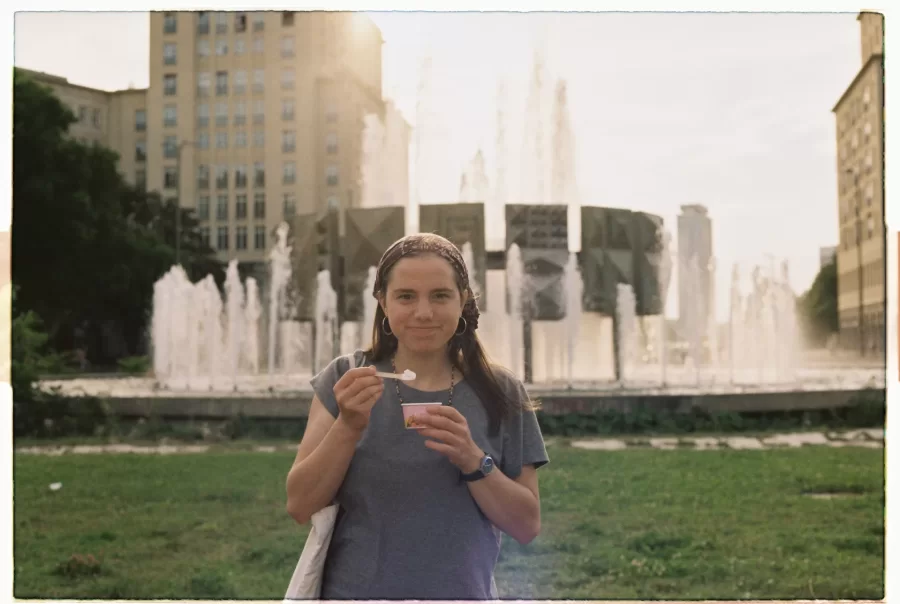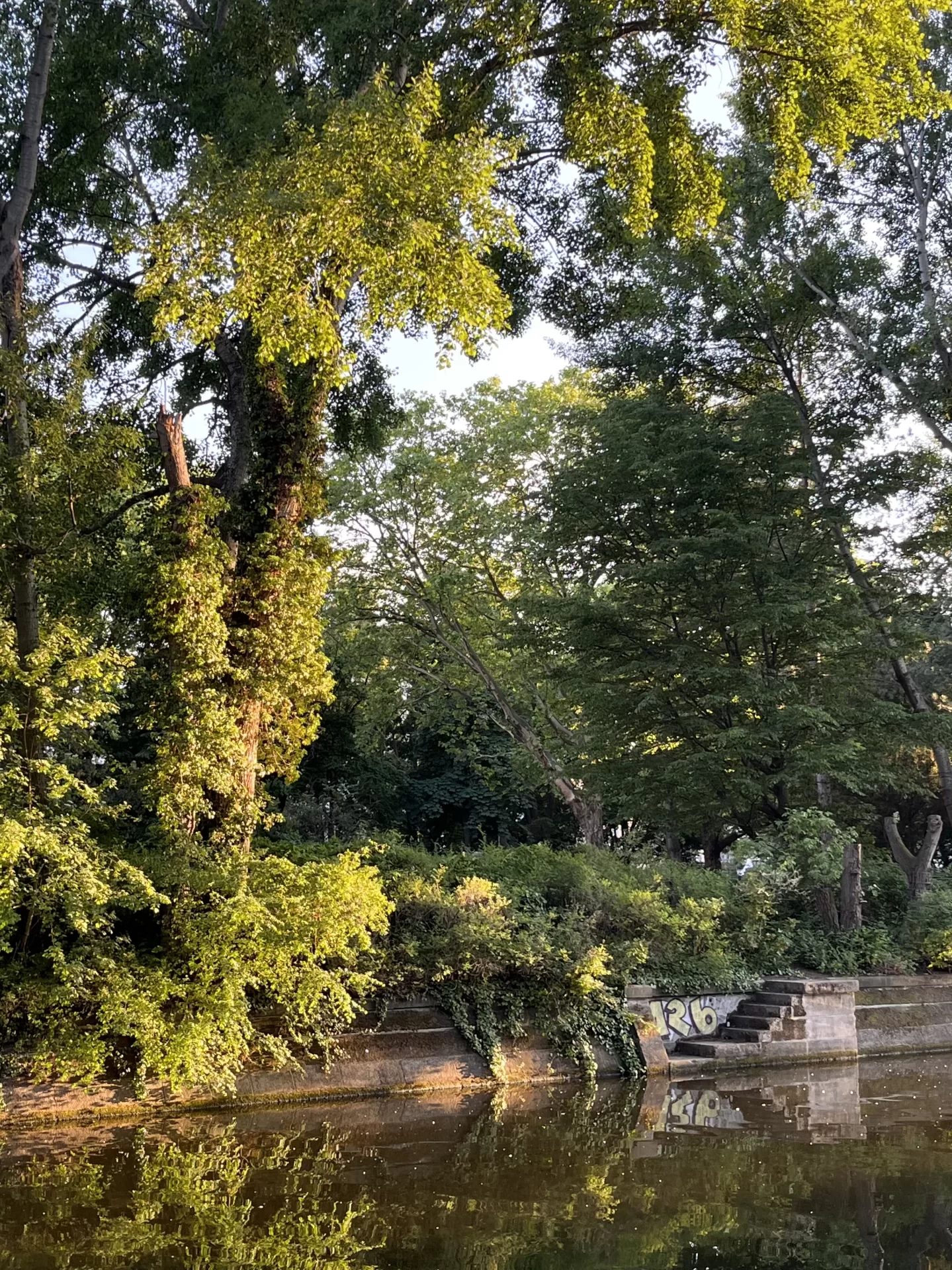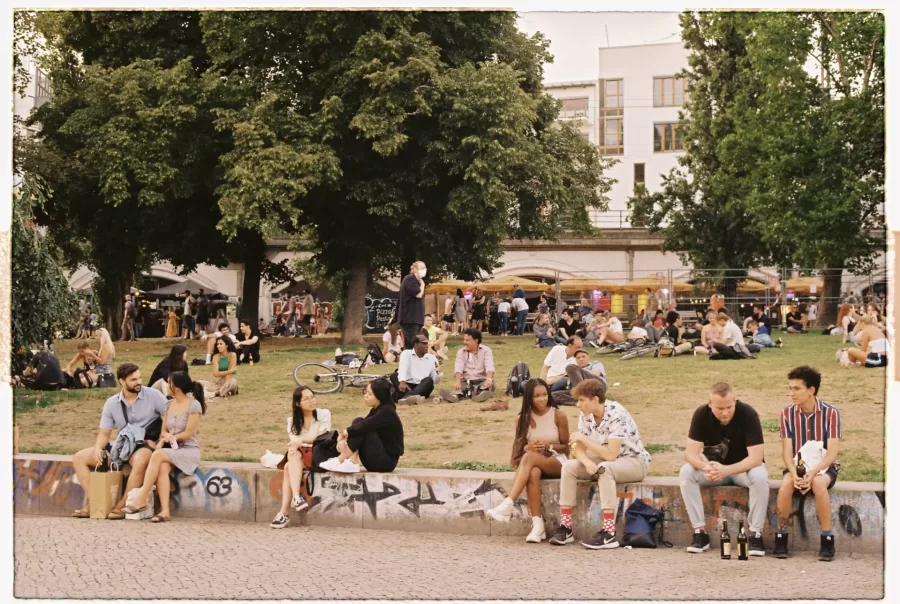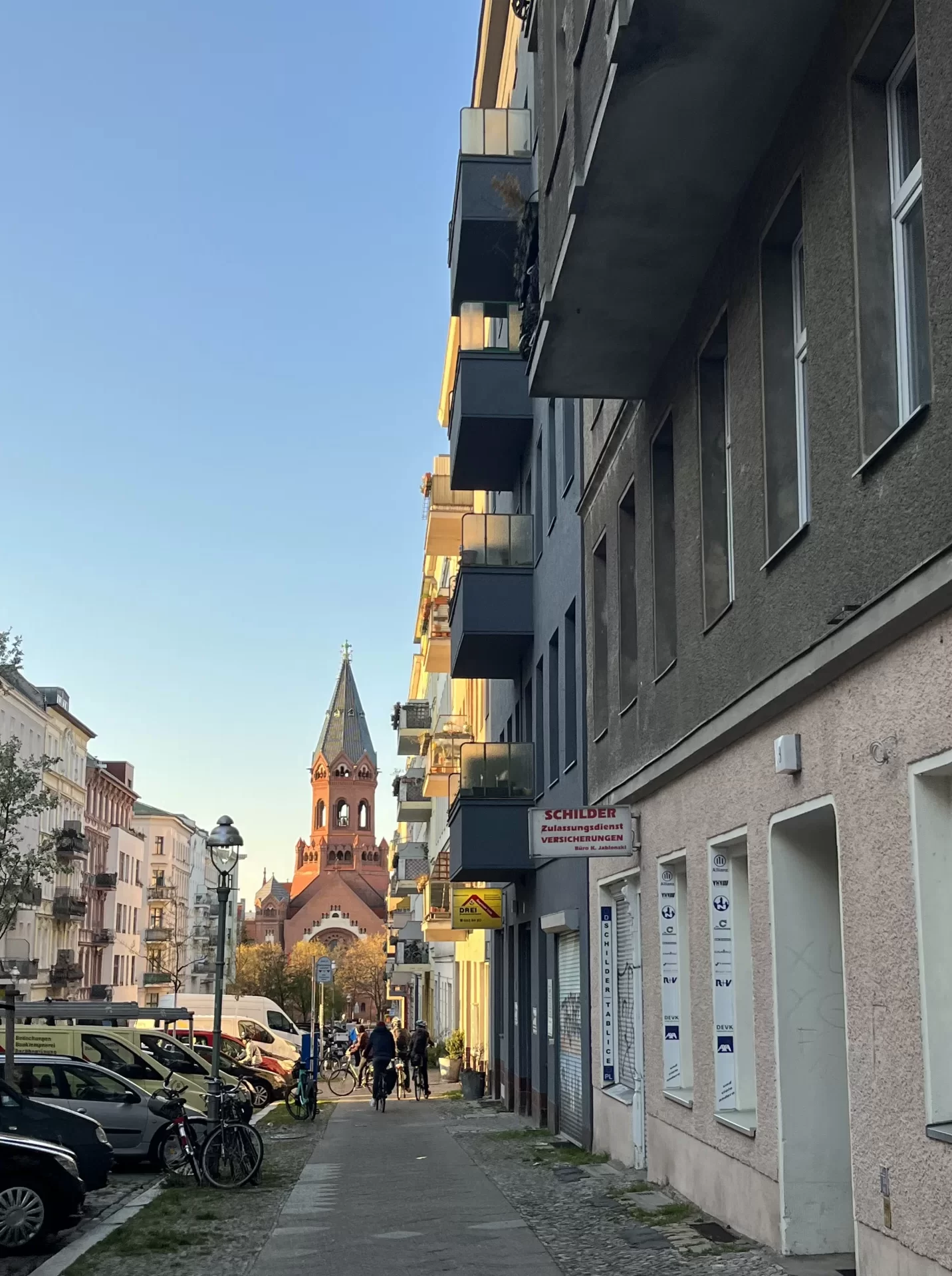Elliott Vahey (’23): “I loved wandering around on foot or bike and discovering hole-in-the-wall places to eat”
I studied abroad in Berlin in the Spring of 2022, through the IES Berlin Language and Areas study program.
I also chose to take a course through the Humboldt University of Berlin (HU), which allowed me to extend my stay through a student visa. The courses I took at IES included Berlin Literature, German language, Politics of Memory, and German Pop Culture. My HU course was called “Pro-Migrant Protest.” Taking “Pro-Migrant Protest” and meeting outside of class with peers for projects was especially helpful for improving my German. What I enjoyed most about my academics in Berlin was getting to practice my language skills and interact with the city through museums, monuments, theater productions, and field trips to historical sites. Until this point, a lot of my education (both in K-12 and in college) has been American-centric. So, it was meaningful to dive into the curriculum that focused on German and European historical and social perspectives.
In my opinion, there are three main things that make Berlin a remarkable city to live in (especially as a college student): access to green spaces, cultural/historical engagement opportunities, and ease of travel. Firstly, the green spaces in Berlin are incredible. Especially in the spring and summer months, there are so many people lounging, playing sports, and picnicking in the parks. There are about 2,500 parks in Berlin and almost half of the city is open green space. My personal favorite parks are Treptower Park, Naturpark Südgelände, and Tempelhof. I made it one of my goals to check off as many parks as I could during my time abroad. Close by the parks you will also find beer gardens and other activities, like mini golf, ping pong, and street fairs. When the weather allows it, there are tons of people sitting outside in cafes and enjoying cappuccinos. I babysat for a family in Berlin over the summer and learned that some cafes even have babycinos, a small cup of frothed milk for little ones.
What I enjoyed most about my academics in Berlin was getting to practice my language skills and interact with the city through museums, monuments, theater productions, and field trips to historical sites.
Secondly, Berlin is a city bursting with ways to interact with history and culture. On every corner you turn, there are museums, theaters, restaurants, and market halls. The art scene is quite fascinating, including architecture that reflects the East/West divide. The Middle Eastern food in Berlin is especially delicious and there are countless döner kebab stands scattered throughout the city. I loved wandering around on foot or bike and discovering hole-in-the-wall places to eat. The avenues for learning about World War II, post-war, and Cold War history are extensive. The Documentation Centre for Displacement, Expulsion, Reconciliation was one of the museums I found most compelling. Attending language cafes, live music performances, and visiting the Eastside Gallery were a few of my favorite cultural activities.
Finally, Berlin is an incredibly pedestrian and biker-friendly city. The bike infrastructure in Berlin is robust and it’s super easy to get around on wheels. I bought a bike for cheap off of Facebook Marketplace one of the first weeks I lived in Berlin and it was a worthwhile purchase. I commuted to class every day via bike and it was easily my favorite part of my day-to-day routine. Public transit is also extremely accessible and you can reach every corner of the city. During the warmer months, I loved taking the train out to the lakes that lie just outside the city’s center. It was a great way to get respite from the busy metropolis.
Overall, the aesthetic of Berlin is gritty, experimental, vibrant, and brimming with dynamism. It is a conglomeration of international cultures, styles, and ways of life. There is so much to explore and it is all right at your fingertips.



